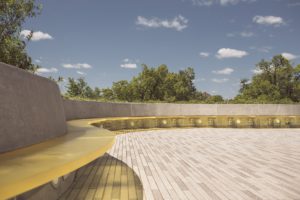General Finish is a pre-made water-based topcoat of wood stain without additives. It is a natural pre-picking conditioner that is applied to the raw wood to condition the surface for uniform penetration of the stain. Pre-sealing can cause the final stain to be too light, so you will need to use a darker colour.
Apply a generous amount of stain to absorb wood with large open pores such as oak, mahogany, and ash. Stir the stain and apply with a brush in the direction of the grain. Overlap or give the stain about 50% coverage and wipe away any excess absorbent with a cloth.
Let the pre-stain conditioner dry for 30 minutes before applying your final stain colour. Once applied, remove the excess when drying and spread the dry area with a cloth. Use a natural break in the window or door boundary to divide a large area into more manageable work areas.
Wood surfaces can be prepared by applying a sanding layer for pickling with a series of layers. A layer of timber protective coatings is recommended. A second layer can be applied depending on the wood porosity and moisture content.
Special tools for applying the wood finishing are rags, friction pads, brushes, and spray guns. The most used wood finishes are wax, shellac, dry oil, linseed oil, tungsten oil, lacquer, and paint. Imperfections, nail holes, and surfaces can be filled with wood putty, pores filled with wood putty, and wood paint can be altered with a variety of techniques such as stain bleaching, ammonia, and steaming.

Applying a Natural Timber Stain to the finished surface does not change the colour of the wood. Coloured stains on polyurethane surfaces do not penetrate the pores of the wood to a significant extent and disappear when the surface itself is removed. Note that some woods such as pine and cherry do not absorb the stain and cause stains.
Stains enhance the natural colour of the wood and provide a decorative finish. Many external stains contain naturally occurring oils to nourish the wood. Monocle wood stain provides a unique finish because it is a stain that is clear.
Softwoods such as pines absorb stains unevenly and react better to stains when the wood is pre-sealed. Water-based wood stains provide a colour that is not absorbed as well as oil-based wood stains. Like oil-based polyurethane, water-based polyurethane can provide additional protection from scratches and stains due to its drying time.
Natural stains have a variety of seventeen wood finishes ranging from clear and toned to walnut and oak, which leave a transparent finish. Easy to use, only one layer of Black Japan Timber Stain is required to darken the wood before applying, creating a flat, translucent finish. This stain works best on light wood but can also be used on darker woods with two or three layers.
Water repellent, mold and fungus resistant, and available in a wide range of wood stain paints. Pigment stains give colour and hide grains, they are available to decorators in all colours and wood tones.
Wax finishes provide a simple finish that gives polished stained wood a natural shine. High strength stains coat the surface of the Penofin hardwood finishes with reclaimed Timber protective coatings, which is the choice of wood experts who know that penetration of wood is crucial to longevity and beauty.
The right wood stain can give any weathered wood fresh appeal and a beautiful new look. A beautiful golden wood tone that resembles the ancient pine in the area of the deck stain.



